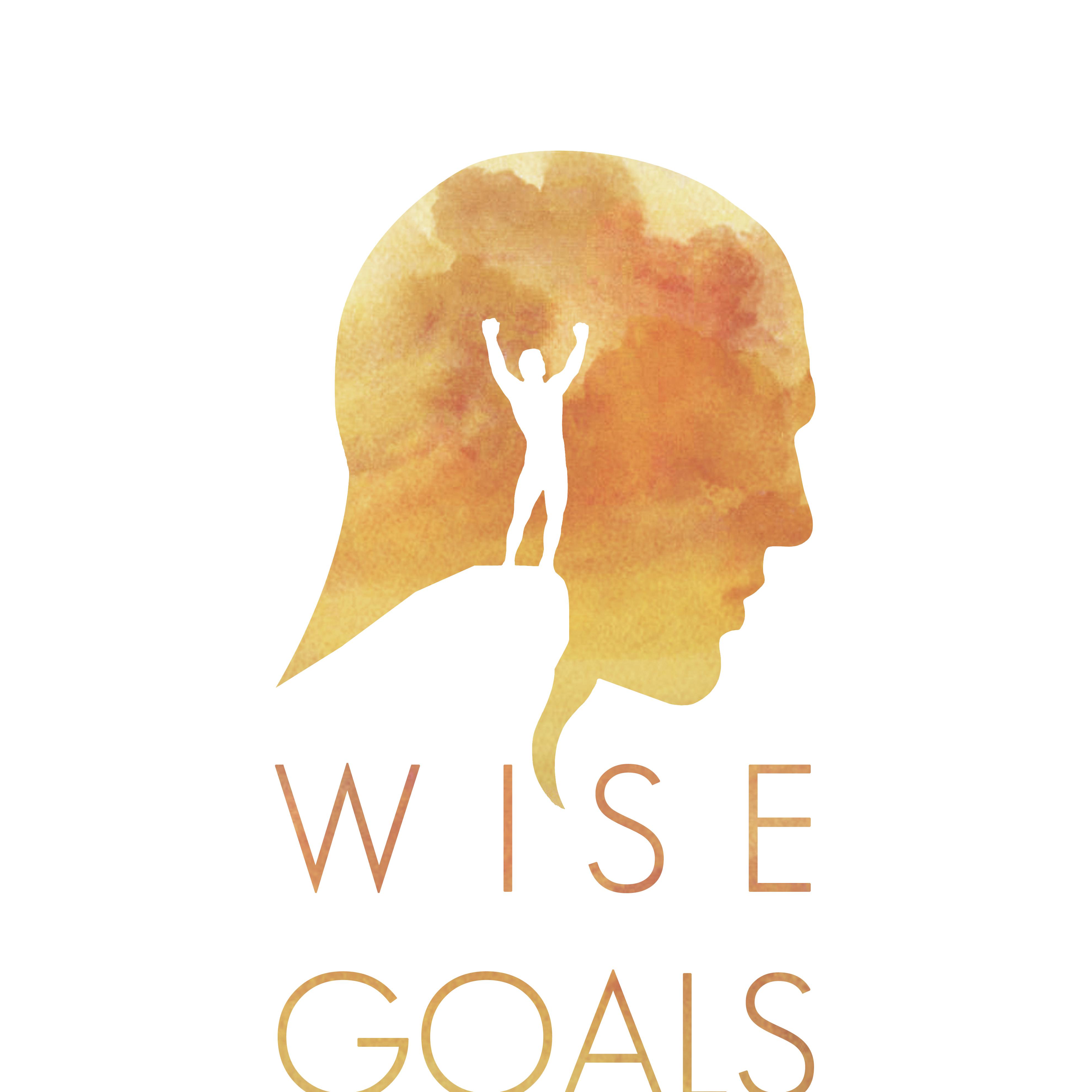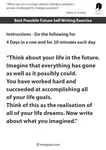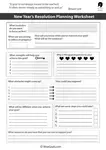- Home
- Goal Supporting Resources
- The What Went Well exercise
The 5-Minute What Went Well Exercise: Boost Gratitude & Momentum Daily
Studies show people who practice gratitude experience 23% less stress and 10% more happiness (Harvard Health). Yet most of us fixate on what's not working.
What if just 5 minutes daily could shift your focus?
The "What Went Well" exercise is a simple, science-backed way to:
- Spot hidden wins your brain overlooks
- Transform gratitude into motivation
- Build momentum
No journaling required—just 3 questions:
- What went well today (big or small)?
- Why did it happen?
- How can I create more of this?
I've seen clients use this to break negative thought cycles, reignite stalled goals, and find joy in daily progress.
Try it now: Pause and name one thing that's gone well this week. Feel that? That's momentum starting.
What Is the “What Went Well” Exercise—And Why Does It Work?
We’ve all had periods where it feels like nothing is working. But here’s the truth: good things are happening—your brain just filters them out.
The What Went Well (WWW) exercise is a structured way to pause, spot the wins your mind ignores, and use them as fuel. It’s not toxic positivity or forced gratitude—it’s a deliberate practice to balance your perspective and build momentum.
1: The Basics: How It Works
The exercise takes 5 minutes and answers three questions:
- What went well today? (Name 1-3 things, big or small.)
- Why did this happen? (Recognize your role—even if partly.)
- How can I create more of this? (Identify a repeatable pattern.)
Example: *“I finished a project early (win!) because I blocked distractions (why). Tomorrow, I’ll schedule another 90-minute focus session (more).”*
This isn’t journaling or “good vibes only”—it’s training your brain to notice evidence of progress, which most of us overlook.
2: Why This Practice Changes Things
Negativity bias is real: Your brain evolved to prioritize threats and problems, leaving 80% of daily wins invisible (Baumeister et al., 2001). The WWW exercise counters this by:
- Rewiring your focus: Spotting wins builds genuine confidence (not arrogance) because it’s based on real evidence.
- Breaking stagnation: When you’re stuck, listing why things worked reveals actionable patterns (e.g., “I had energy after my walk—I’ll move more”).
- Creating compound growth: Small wins build motivation to tackle bigger goals (Amabile & Kramer, 2011).
Clients who use this report less burnout, sharper problem-solving, and—ironically—faster progress because they stop dismissing their own efforts.
3: What the Science Says
A landmark study by Emmons & McCullough (2003) tested gratitude practices across three groups. Participants who wrote down just 3 things that went well weekly for 10 weeks experienced:
- 25% higher happiness scores
- Fewer physical ailments (e.g., headaches, fatigue)
- Increased motivation to pursue goals (vs. control groups)
Brain scans (Kini et al., 2016) later showed why: Gratitude exercises strengthen neural pathways for positivity—literally making it easier to notice wins over time.
How to Use the "What Went Well" Exercise for Maximum Impact
The power of this practice isn’t in knowing it—but in using it. Done right, these five minutes can become your secret weapon for clarity, motivation, and progress. Here’s exactly how to make it work for you.
Step 1 – Capture Your Wins (The "What")
Start by naming 1-3 specific things that went well in the last 24 hours. Not vague platitudes ("Life is good"), but concrete moments:
- "I handled a tough client call calmly."
- "I finished my workout even though I was tired."
- "My partner laughed at my joke at dinner."
Why this works: Specificity trains your brain to scan for evidence of progress (not just problems). Struggling? Ask: "What didn’t go wrong?" (e.g., "My commute was smooth" counts).
Pro tip: Set a phone reminder for the same time daily—morning or evening works. Consistency > change. Also, remember that missing the odd day out doesn't matter at all. It's the days you do, even if just once a week, that accumulate over time.
Step 2 – Find the "Why" (The Hidden Pattern)
For each win, ask: "Why did this happen?" Dig deeper than luck:
- "I stayed calm on the call because I prepared notes beforehand."
- "I worked out because I laid out my clothes the night before."
This reveals your agency—the repeatable behaviors that created the win. No win is too small to analyze. "My partner laughed because I made time to connect" highlights a priority you can protect. This is growth mindset in action.
Watch for: Downplaying your role ("It was nothing"). Credit yourself or others fairly.
Step 3 – Engineer More Wins (The "How")
Now, bridge gratitude to action by asking: "How can I create more of this?" Focus on one tiny, doable step:
- "I’ll prep notes for Monday calls."
- "I’ll lay out workout gear again tonight."
This closes the loop: You spot wins → decode success → design future wins. Over time, this builds a library of proven strategies you control.
Key nuance: Don’t overcommit. One small action per win is enough to snowball momentum.
Real-World Proof: How This Simple Exercise Transforms Lives
Theory is great – but results speak louder. From corporate teams to stay-at-home parents, this deceptively simple practice delivers outsized impact. Let’s look at the evidence.
1: Why I Swear By This Practice
I’ve used this exercise daily for about 15 years – through successes and failures, progress and decline, and positive and negative emotional periods. Here’s what I learnt:
- On and off works really well. At times, a week on, two weeks off. At other times, a month on, 3 months off. Whatever supports me to do it with a fresher feeling.
- Most of the time, naming only one thing that went well is enough - You can go at it from a slightly different angle each time. There is no need to be strict in how you do it. It's important to practice it based on an understanding of how it benefits you.
- The most important benefit happens over a longer period of time - when you begin to naturally notice the things that go well through the course of the day and find yourself more aware of the causes and conditions behind them.
Also, it's not all positive - it's more nuanced than that:
- Doing this can make you more aware of other resistant forces - Considering we've been making millions of causes since the day we were born, it's only natural that already in place processes, that are not on board with noticing and focusing on what went well exist. So be ready for that, and persist with self-care and understanding.
- I accidentally presumed it wasn't working for me - Although it seems like naming things that went well should make me feel positive immediately, that wasn't the case for a long time. I'm glad this didn't make me stop.
- Noticing what went well more doesn't mean things that don't go well are "bad" - I struggled with this for a while. There is the potential for both to be valuable. The work on things that don't go well is perhaps a separate-yet-connected subject.
2: Your Turn: Start Small, Think Big
The best proof will be your own. Try this 7-day challenge:
- Set a timer for 3 minutes each evening
- Name just 1 win + its "why"
- Saturday: Review your list - what patterns emerge?
Pro tip: Share wins with a well-chosen friend/partner at a carefully selected moment. Speaking them aloud magnifies the effect.
Your wins are already happening. This exercise just turns up the volume.
Your What Went Well Toolkit: Free Resources & Next Steps
Now that you've seen the power of this practice, let's make it effortless to implement. Here are my top-rated resources to take you from curious to consistent.
Affiliate products.
If you purchase a product through links on this page I receive a small commission at no cost to you. I was not paid for writing this review, and I did not receive it as a freebie. I'm suggesting it for you because I own it and love it, and I think you would too. For more info, please see this affiliate disclosure document.
1: The Book That Started It All
- The definitive work on PERMA theory and evidence-based positive psychology
- Includes original research on the "Three Blessings" exercise (WWW precursor)
- Read for: The science behind why this practice boosts lifelong wellbeing
2: Watch & Learn
🎥 "What Went Well Exercise Explained" (YouTube)
- 7-minute visual guide to the practice
- Shows real-time examples of transforming small wins into motivation
- Perfect for visual learners or teams
3: Research That Matters
🔬 "The Science of Gratitude" (Free Paper)
📊 My Original Study
- How positive psychological variables (including gratitude) mitigate childhood adversity impacts
- Peer-reviewed findings with actionable takeaways
- Download Study PDF
Want Personalized Momentum?
Many clients come to me when they:
- Can’t spot their own wins (even with the tools)
- Keep hitting the same progress plateaus
- Need to translate wins into career/business growth
My 1:1 wellbeing coaching helps you:
✔ Systematize what’s already working
✔ Troubleshoot when the practice feels flat
✔ Scale wins into measurable results
Let’s talk: Schedule free 20-min strategy call
- Home
- Goal Supporting Resources
- The What Went Well exercise
Who I'm Affiliated With
I'm proud to be part of professional networks that value evidence-based practice, inclusion, and social impact.







